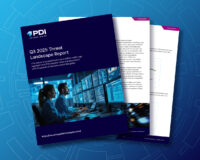
If you’re a fuel retailer, maintaining the right fuel price around the clock is a business imperative. Pricing gas too high will send customers to your competition, while pricing it too low will cut your profit margin. That’s why striking a balance between sales volume and per-gallon profits should be at the core of your fuel pricing strategy.
Best practices in fuel pricing strategies
Several factors affect a convenience store’s sales volume: brand, location, the effectiveness of operations, quality of in-store merchandise, and loyalty program popularity. The following best practices can support those essential elements and strengthen your pricing strategies to achieve maximum profitability:
1. Equip your business with robust analytics
To fully optimize fuel pricing, use internal and external data, including sales and transaction data from different sites, seasonal variables, historical data, and market trends. In addition to capturing and using relevant data, you also need the right analytics to help understand and know when to act on price fluctuations.
If you’re still manually compiling data in a spreadsheet, it’s time to automate that work. Any manual process is inherently inefficient, requiring precious time and effort. Using a spreadsheet to analyze pricing doesn’t give managers or operators the full view of their operations, either. They are missing out on the breadth of capabilities that a robust fuel pricing solution provides, such as advanced analytics that can model the effect of fuel pricing on other aspects of the business, for example, in-store sales or foot traffic patterns.
2. Monitor competitor prices in real-time
According to the National Association of Convenience Stores (NACS), the majority of consumers (59 percent) choose a gas station based on fuel prices, so monitoring competitive gas prices is critical. But it’s not enough to only follow your top competitor; pay close attention to all of them. Apply dynamic pricing principles that take into account other market data to optimize your pricing.
3. Use data-driven insights to inform long-term strategies
To ensure future growth, you need long-term strategies. Leverage both internal and external data to identify relevant market trends and consumer behaviors that can inform your strategy. To gain meaningful insights from your data, use a powerful fuel pricing solution that connects information from different sources.
Choose a solution that also leverages artificial intelligence (AI) and machine learning to analyze sales, market, and pricing patterns. Machine learning can support your pricing strategies by interpreting cumulative data for forecasting.
4. Anticipate a volatile market
Multiple factors can affect fuel pricing, causing prices to fluctuate. Operating in a volatile market and being able to model scenarios so you can quickly adapt when unexpected developments occur requires the right technology.
A solution with sophisticated predictive and analysis tools can help you determine the best price at any given moment. And when you adjust your prices, your solution should be able to make immediate changes across point-of-sale systems, mobile apps, and websites.
The balancing act
To compete successfully in today’s dynamic market, where price fluctuations are inevitable, you need the right tools and tactics to balance various elements in your fuel pricing strategies. Take advantage of the latest technology and relevant data for setting the best prices that serve consumers’ needs, achieve your margin goals, and ensure your operation’s future growth.
You can thrive in today’s digital economy. Contact us today, to learn how we can help you transform your business.







